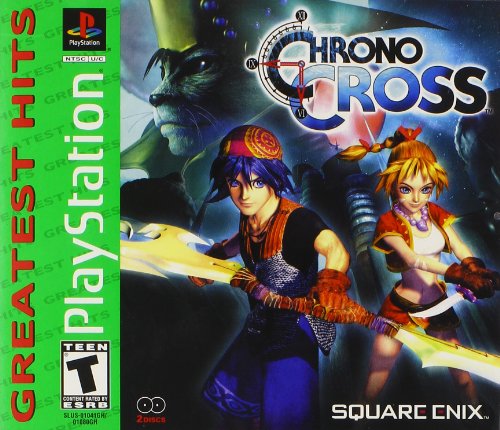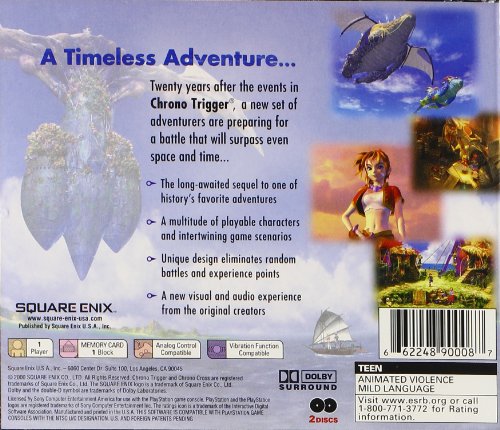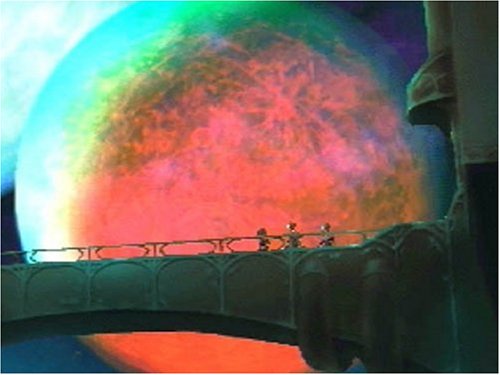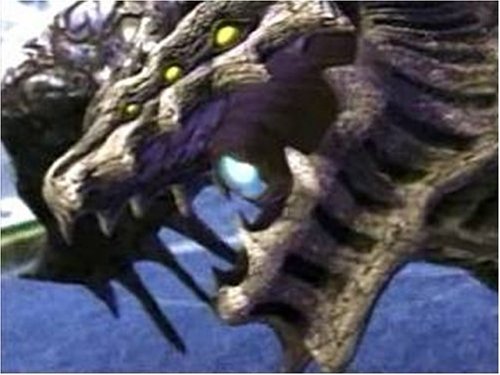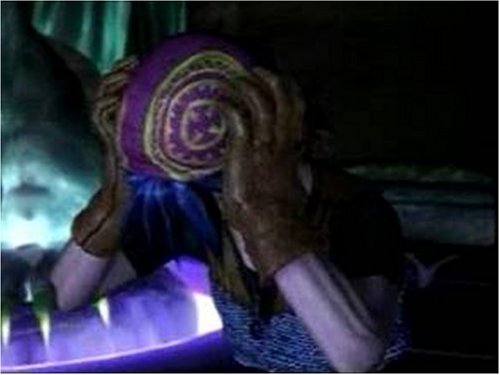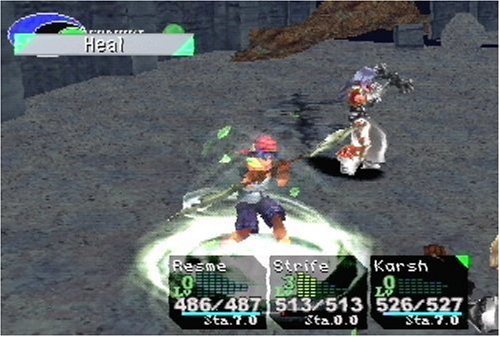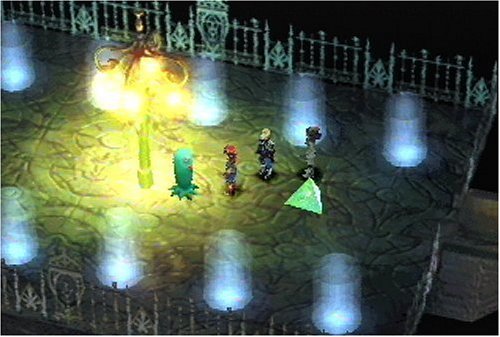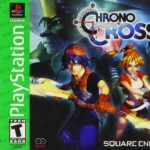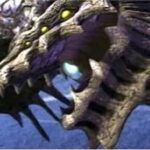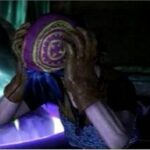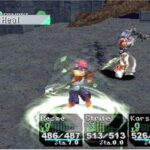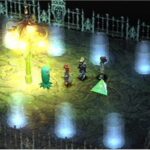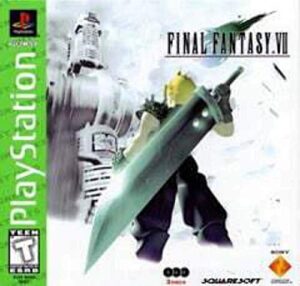Review
Square’s Chrono Trigger got everything right. The self-proclaimed “dream team” of scenarist Yuji Hori (Dragon Quest), producer Hironobu Sakaguchi (Final Fantasy), and character designer Akira Toriyama (Dragon Ball Z) created a quirky, enjoyable romp through time with a cast of endearing characters, memorable environments, solid RPG gameplay, and unparalleled presentation. Needless to say, fans of the 16-bit SNES game have clamored for a sequel ever since. Which is why, after nearly five years of silence, the announcement of Chrono Cross drew so much ire. Where was the legendary dream team? (Only Sakaguchi contributed to Chrono Cross.) Where was the cast of characters we had grown to know and love? And who the hell was that Thundercats reject named Yamaneko? Things looked grim for the Chrono Trigger faithful. When Chrono Cross was revealed to have 40 playable characters, many lost faith entirely in the game. Had Square thrown all pretense of a coherent title out the window? But fortunately for series’ fans, Chrono Trigger’s dream team doesn’t have a monopoly on RPG innovation. As with the first SNES title, everything in Chrono Cross clicks in a way most games wish they could imitate. The different parts combine into an instant RPG classic. The story begins with the hero, Serge, thrust into a parallel world where he had died under mysterious circumstances more than a decade earlier. He teams up with a rowdy adventurer, Kid, and sets out in search of the mysterious Frozen Flame, an artifact that lets the holder reshape time and space at will. The enigmatic Yamaneko, a regal man-cat who hunts the Frozen Flame for his own purposes, opposes them. In his quest to return home, Serge will collect both allies and foes and will find himself thrust into an adventure that will reveal his heritage, purpose, and ultimate destiny. Only by crossing between the two dimensions can Serge find the answers to his questions. Without revealing any more of Chrono Cross’ excellent storyline, it can be said that it successfully pulls off the difficult balancing act every sequel faces. It’s not a rehash of the original Chrono Trigger, nor does it exploit the characters and setting of Chrono Trigger for name recognition alone. Instead, it sets up an equally valid, separate, and well-developed world, then slowly and responsibly weaves in elements, characters, and events from the first title. It doesn’t continue the original Chrono Trigger mythos so much as it expands it. You will be stunned by the resolution of the disparate plot threads. And with features like an impossibly taciturn hero, an accommodating attitude toward interdimensional travel, and a New Game+ mode, Chrono Cross manages to maintain the ineffable Chrono Trigger feel. The battle system deviates slightly from the RPG norm. The traditional active time bar has been replaced with a bar of seven stamina points. While the engine is still ostensibly turn based, any character can take a turn at any time as long as he has at least one stamina point remaining. Enemies can even interrupt your characters’ attacks. Party members can unleash a weak, medium, or strong attack, requiring respectively one, two, or three stamina points. Even though the game pauses while waiting for input, the ability to start and end a character’s turn whenever you please makes for a more frantic, pseudo-real-time experience. Elements – Chrono Cross’ magic system – are divided into six colors: black and white, red and blue, and green and yellow. Each character has a color alignment that determines his affinity to certain elements. Once you obtain a spell, you place it in an acceptable empty slot on a character’s element grid. For example, a spell with level “5+/-2” is a level-five spell, but it can be placed in any slot from three to seven with the expected drop/rise in effectiveness. Successfully landing a weak, medium, or strong attack adds one, two, or three bars to a character’s element grid. A character with sufficient element bars can cast a spell, but the cost is seven stamina points, temporarily dropping him out of action. Combine building element grids and plummeting stamina bars with the dynamic nature of characters’ turns, and battles become a constantly shifting endeavor – yet always remain under your total control. Once you understand the intricacies of the battle system, encounters are always over quickly. Two other features of the battle system are dual techs and the color field. As in the original Chrono Trigger, characters can combine their special techniques for combined attacks; while not as prevalent as might be expected, the combos are there to be discovered. The color field keeps track of the color of the last three spells cast. If the field becomes a single color, characters with that color alignment gain a statistical boost. Moreover, a monochromatic field is the only time when one of the game’s mighty summons can be unleashed. Manipulating the field so that it becomes a single color is trickier than you might expect, as your opponents’ spells (and interference) can’t be ignored.–Andrew Vestal—Copyright © 1998 GameSpot Inc. All rights reserved. Reproduction in whole or in part in any form or medium without express written permission of GameSpot is prohibited. — GameSpot Review

 Driver
Driver 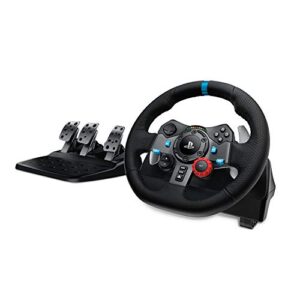 Logitech G29 Driving Force Racing Wheel and Floor Pedals, Real Force Feedback, Stainless Steel Paddle Shifters, Leather Steering Wheel Cover for PS5, PS4, PC, Mac - Black
Logitech G29 Driving Force Racing Wheel and Floor Pedals, Real Force Feedback, Stainless Steel Paddle Shifters, Leather Steering Wheel Cover for PS5, PS4, PC, Mac - Black 
